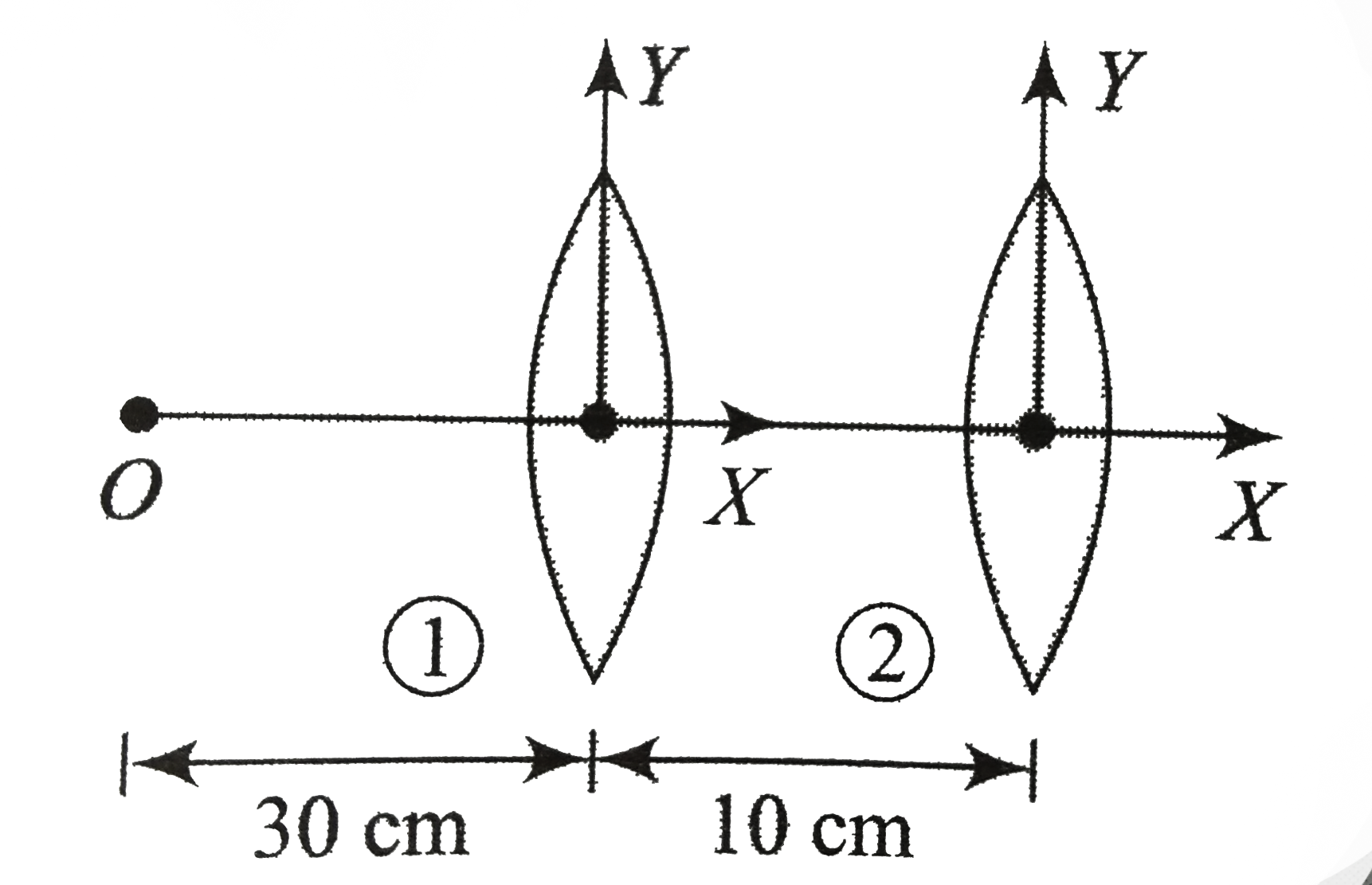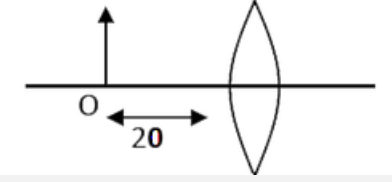A magnifying lens has a focal length of 10 cm
Q What will be the magnification?

In case of magnifying lens, the lens is convergent and the image is erect, enlarged, virtual, between infinity and object and on the same side of lens as shown in figure. So here f=10 cm and v=-30cm hence from lens -formula.
1v−1u=1f we have 1−30−1u=110 i.e., u=-7.5 cm
So the object must be placed in front of lens at a distance of 7.5 cm (which is <f) from it.
(b) m=[IO]=vu=−30−7.5=4
i.e., image is erect, virtual and four times the size of object.
Similar Questions
Knowledge Check
A square card of side length 1 mm is being seen through a magnifying lens of focal length 10 cm. The card is placed at a distance of 9 cm from the lens. The appaent area of the card thorugh the lens is
A1cm2B0.81cm2C0.27cm2D0.60cm2
A converging lens has a focal length of 0.12 m. To get an image of unit magnification the object should be placed at what distance from the converging lens ?
View SolutionA wire mesh consisting of very small squares is viewed at a distance of 8cm through a magnifying converging lens of focal length 10cm, kept close to the eye. The magnification produced by the lens is:
View SolutionA convex lens of focal length 20cm is placed 10cm away from a second convex lens of focal length 25 cm. What wil be the location of the image of an object at 30 cm in front of the first lens?

View SolutionA simple microscope or a magnifying glass with a focal length 5 cm forms an image at the near point of the eye. Find its magnification .
View SolutionCalculate focal length of given lens if the magnification is −0.5.

View SolutionThe distance between an object and a divergent lens is m times the focal length of the lens. The linear magnification produced by the lens is
View SolutionDistance of an object from a concave lens of focal length 20 cm is 40 cm. Then linear magnification of the image
View Solution
